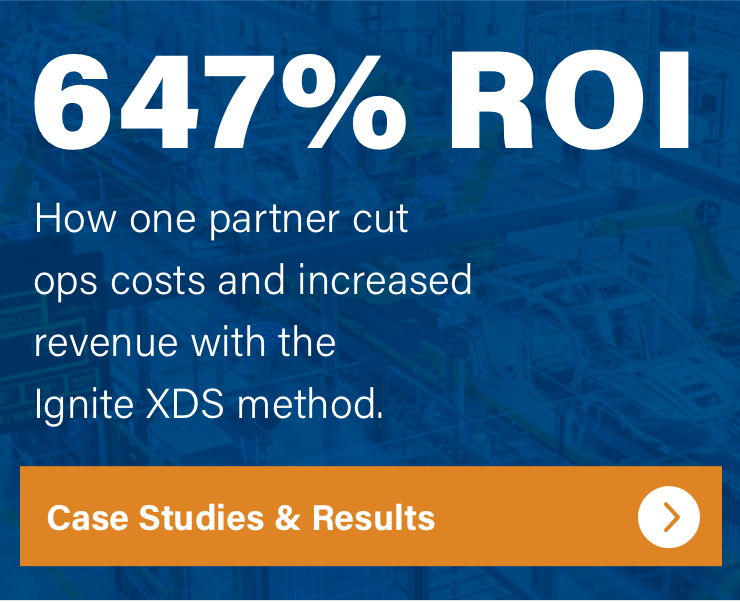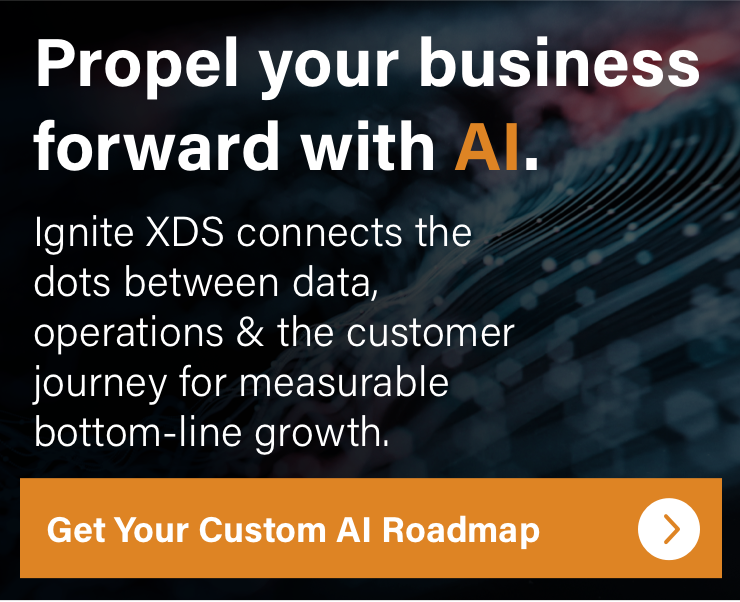
How AI Is Closing the Delivery Gap Between Marketing and Operations
The biggest barrier to growth in mid-market companies isn’t competition. It’s misalignment.
Marketing is pushing brand promises that operations can’t deliver. Sales is chasing leads without understanding the customer’s real needs. Teams work in silos, systems don’t talk, and leadership is stuck in a cycle of overpromising and underdelivering.
At Ignite XDS, we call this the Delivery Gap.
It’s the space between what customers are told to expect and what they experience. And it’s where revenue, reputation, and retention quietly erode.
AI doesn’t fix this gap on its own. But when deployed with strategy, AI becomes the connective tissue: linking insights, decisions, and actions across the entire business.
The Real Cost of a Disconnected Customer Journey
Most businesses don’t realize how often their customer experience fractures. It’s not always a glaring issue, it’s death by a thousand paper cuts:
- A lead form promises fast follow-up, but sales takes three days to respond.
- A new customer is onboarded, but support doesn’t know what was sold.
- Operations shifts timelines, but marketing still runs the original campaign.
- Sales pushes unprofitable accounts to hit quota, and ops bears the margin hit.
These breakdowns aren't just inconvenient, they're expensive. They increase churn, hurt lifetime value, and kill referral potential. According to Bain & Co, 80% of executives think they deliver a superior experience. Only 8% of customers agree.
Fixing this isn’t about better CRM notes. It’s about creating a unified feedback loop, powered by smart systems and increasingly, AI.
What AI Enables When Strategy Comes First
AI can’t replace leadership, but it can dramatically improve how your teams execute across departments.
Here’s what that looks like in practice:
1. Unified Signal Sharing
AI connects insights from every touchpoint: web behavior, campaign response, sales activity, support logs, and turns them into real-time signals your teams can act on.
- Marketing knows which messages are resonating and which aren’t.
- Sales knows which leads are most likely to convert based on behavioral indicators.
- Ops can see volume forecasts based on campaign velocity.
Instead of guessing, teams collaborate using a shared data language.
2. Margin-First Sales Enablement
Too many businesses optimize for revenue and ignore profitability. AI dashboards change that.
In our work with a national food distributor, we helped build a dashboard that showed which sales reps were generating the most margin per account, not just the most volume. That insight reshaped territory design, account prioritization, and ultimately saved the company millions.
This is what happens when marketing, sales, and operations work from the same playbook.
3. Churn Risk and Experience Forecasting
It’s not enough to know what happened, you need to know what’s coming.
AI tools now flag early churn signals based on usage, sentiment, and responsiveness. They surface issues that haven’t been raised yet, allowing teams to intervene before the customer defects.
In one manufacturing partnership, we helped map the full customer journey, then layered in AI to monitor feedback channels, service requests, and account activity. What looked like minor issues were signals of bigger dissatisfaction. Proactive outreach saved those accounts and increased renewal rates.
The result? Better retention. Less reactive firefighting. Stronger margins.
4. Smart Handoffs and Task Automation
Operational Marketing means closing the loop between brand promise and delivery. That requires clean handoffs between people and systems.
AI now supports:
- Automated follow-ups that adjust based on customer stage or behavior.
- Smart routing of service or support tasks.
- Sales sequences that adapt based on lead quality, budget, or buying intent.
- Dynamic CTAs and web content that change based on user signals.
But none of this works if your systems are siloed. That’s why we start with alignment, not tools.
Why Most AI-Fueled “Transformations” Fail
Too many companies bolt on AI without fixing their foundations. They chase automation without building cohesion. They invest in personalization tools while their teams still operate on assumptions.
The result? Faster execution of bad experiences.
We’ve seen it repeatedly, companies blaming their CRM, or email tool, or chatbot provider, when the real issue is structural. The business isn’t designed to move with clarity. The teams aren’t aligned on what matters. The customer journey hasn’t been defined so AI is flying blind.
AI doesn’t create alignment. But when alignment exists, it becomes the accelerator.
What It Looks Like When It Works
Here’s what we’ve helped clients do by bridging marketing and operations with intentional AI:
- Reduce customer acquisition costs by 21% and increase revenue by $1.7M YoY.
- Build custom dashboards that surface deal profitability and rep performance in real time.
- Create AI-powered marketing workflows that adjust based on lead behavior and margin thresholds.
- Implement churn-risk modeling that saved key accounts before renewal cycles.
- Connect customer sentiment data to sales scripts and campaign content, improving close rates and conversion.
These aren’t magic tricks. They’re the result of strategy-first execution, using AI to scale what already works.
Closing the Delivery Gap with Systems, Not Software
What most agencies call “integration,” we call table stakes.
At Ignite, we build systems that close the delivery gap, not just connect platforms. We unify the insights your teams are collecting, the expectations your brand is setting, and the outcomes your operations are responsible for delivering.
When AI is aligned to that system, everything sharpens:
Better lead flow. Better handoffs. Better customer experience. Better ROI.
If Your Teams Feel Disconnected, Your Customers Probably Do Too.
Ignite XDS can help you close the gap.
Where should you implement AI for the greatest return in your business?
Find out specifically where and how AI can transform your business, and give you an edge against your competitors. We'll provide you with individualized recommendations tailored to your unique market position – fast & 100% complimentary.
Get Your Unique AI Recommendations + Bonus Competitive Analysis


